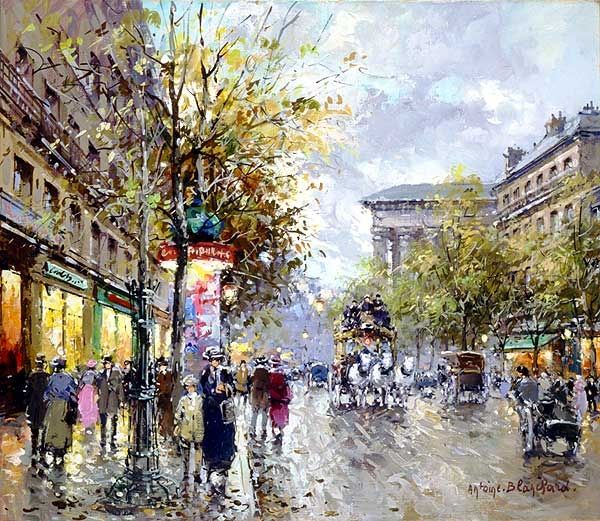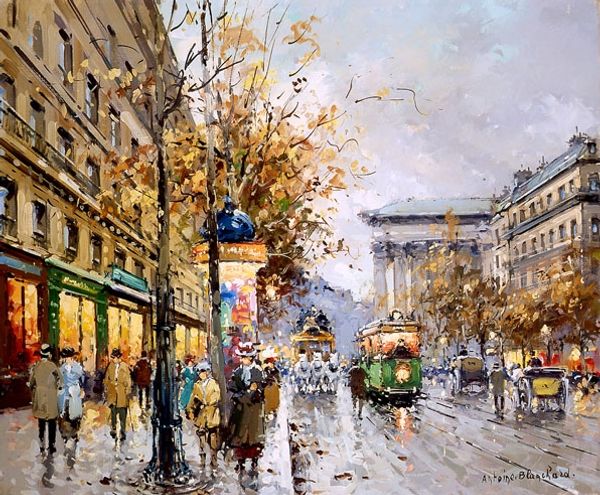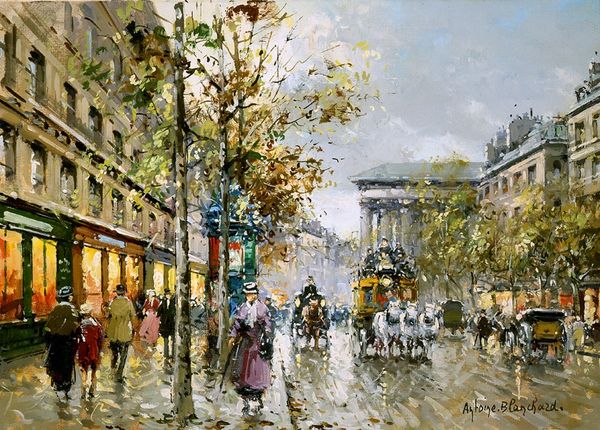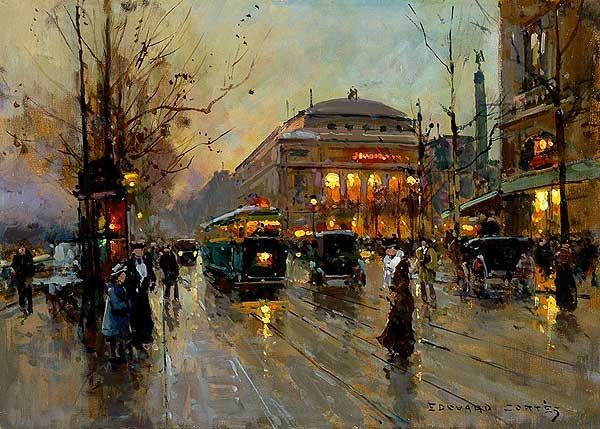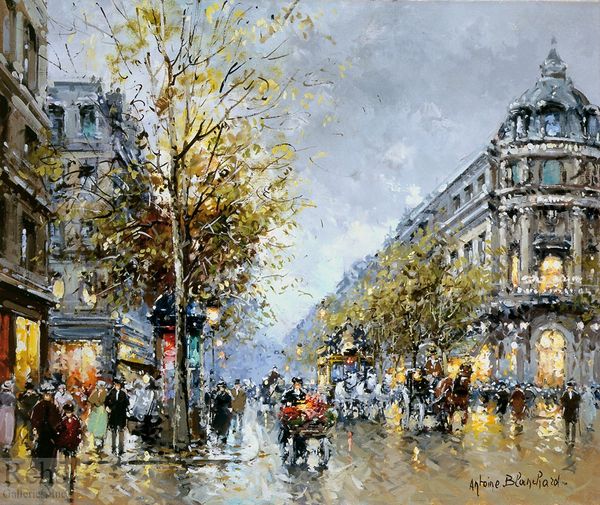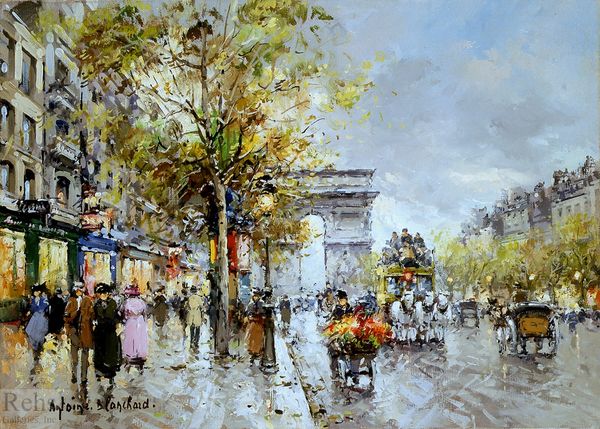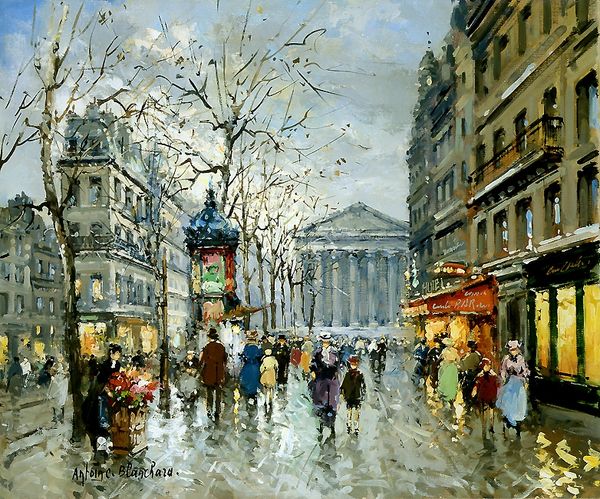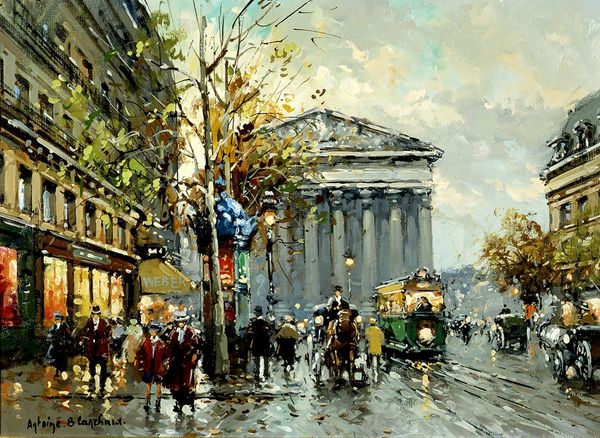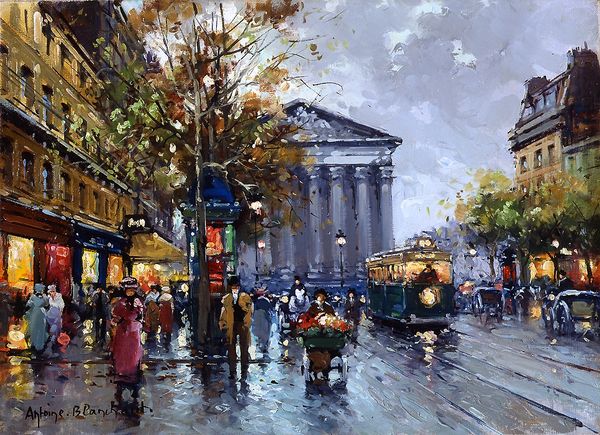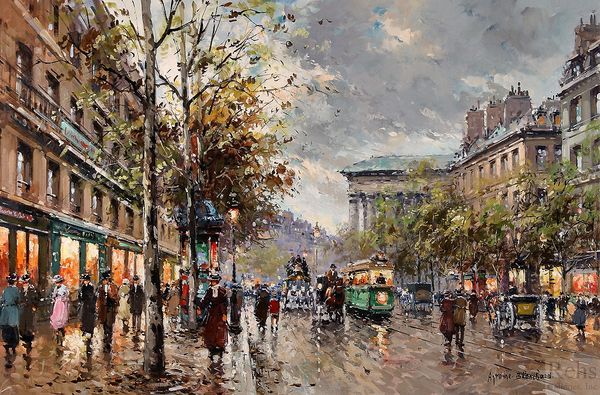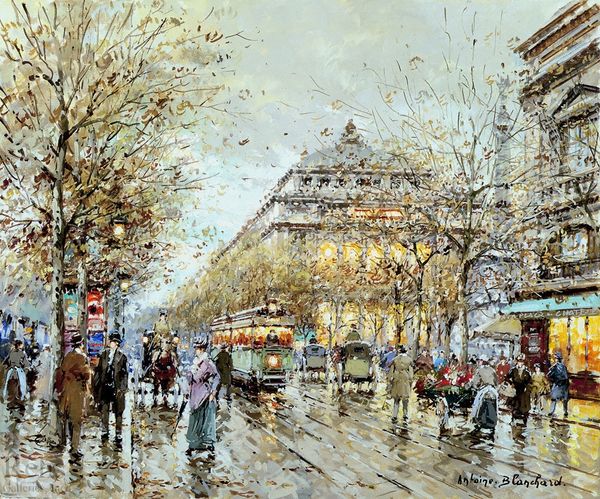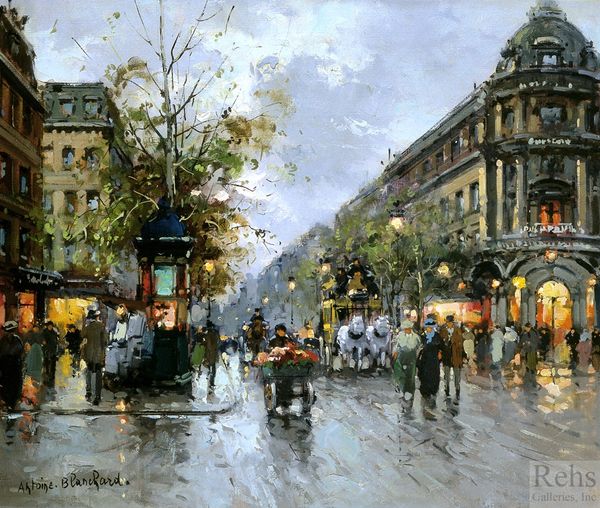
painting, oil-paint, impasto
#
cityscape
#
painting
#
impressionism
#
street view
#
oil-paint
#
urban cityscape
#
impasto
#
cityscape
#
genre-painting
Copyright: Antoine Blanchard,Fair Use
Curator: Antoine Blanchard’s painting, “Rue Royal Madeleine”, captures a bustling Parisian street scene. The date isn't definitively known. What’s your initial reaction to it? Editor: I find it immediately evocative, almost dreamlike. The figures seem to melt into the rainy street. There's a real sense of implied motion in Blanchard’s brushstrokes. Curator: Indeed, it highlights a crucial point: Blanchard, despite working in the 20th century, meticulously recreated Belle Époque Paris. Consider the carriage, the period dress of the figures—elements steeped in history, designed to elicit a specific, perhaps nostalgic, response from the viewer, wouldn't you say? How do you feel it operates within that socio-political landscape? Editor: Well, that conscious revival of the past positions Blanchard's work as participating in a specific, probably commercial, demand for a romanticized vision of Paris, appealing to certain audiences both then and now. I wonder about the economics that enabled such artistic recreation, about how that longing for an idealized past plays into both consumption and identity formation? The artist uses oil paints on canvas, but also what’s visible of the brushwork itself—the texture it creates, contributes substantially. Curator: The visible brushstrokes—that’s impasto—provide visual texture. Think about the material reality, though. Each stroke, each layering of pigment, involves the manipulation of resources—from the mining of raw materials for pigment production, through to the societal context of ateliers where skill is passed from artist to assistant, each element adds to the final form. Consider the distribution, too. How does this particular piece travel, where does it end up on display? Editor: All fair points, yes. And speaking of distribution, the paintings accessibility certainly influenced the narrative it presents about Paris. Blanchard sold these paintings widely. Curator: So, for me, it boils down to acknowledging those unseen layers that construct the art that we, as the public, interact with so readily. This seemingly straightforward cityscape has profound roots reaching into commerce and labor. Editor: Absolutely. And on that point, recognizing those very processes is as valuable, perhaps, as being initially moved by the piece's beauty.
Comments
No comments
Be the first to comment and join the conversation on the ultimate creative platform.
